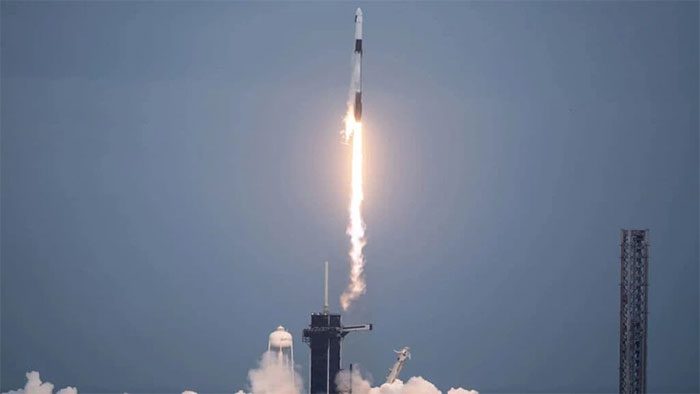When the Axiom Mission 3 spacecraft transported European astronauts to the International Space Station on January 20, it carried a special “guest” that has just been revealed: breast cancer tumor samples.
Researchers from the University of California San Diego (UC San Diego, USA) are using breast cancer patient cells to send into the microgravity environment of space, aiming to explore the efficacy of various cancer treatment methods, according to the news site The Messenger.

Axiom Mission 3 launched to the International Space Station ISS – (Photo: NASA).
While using space travel to research cancer treatments may seem like a significant inconvenience, it is actually an innovative method to accelerate the research process.
The lack of gravity outside Earth’s atmosphere puts human body cells under considerable stress, which may speed up the aging process.
It is estimated that spending 6 months in a microgravity environment—like astronauts typically do—can age human organs and bones by up to 10 years.
In recent years, scientists have begun to utilize this phenomenon to explore the progression of aging and diseases. They hope to uncover clues that could provide various treatment and prevention methods.
Before sending the tumor samples (referred to as organic materials) into space with the four-member crew, UC San Diego researchers treated these tumor cells with two new cancer drugs.
Their goal is to monitor the effects of the drugs on the organic materials in space and compare it to those left on Earth.
The rapid aging process occurring in a microgravity environment will allow scientists to expedite their understanding of drug efficacy.
|
Anticipating Medical Breakthroughs In fact, this is not the first time UC San Diego has sent human tissue to the ISS. Over the past five years, the university has been at the forefront of conducting health science research in space. UC San Diego has collaborated with NASA for several space launches to study the effects of microgravity on human stem cells. In March 2023, scientists from Johns Hopkins University also sent human heart tissue samples to the ISS, exploring the progression of heart disease and how certain medications could slow its development. These are just a few of the many collaborative projects utilizing space travel to advance medical research. This demonstrates that when it comes to medical research, the sky is no longer the limit. |


















































